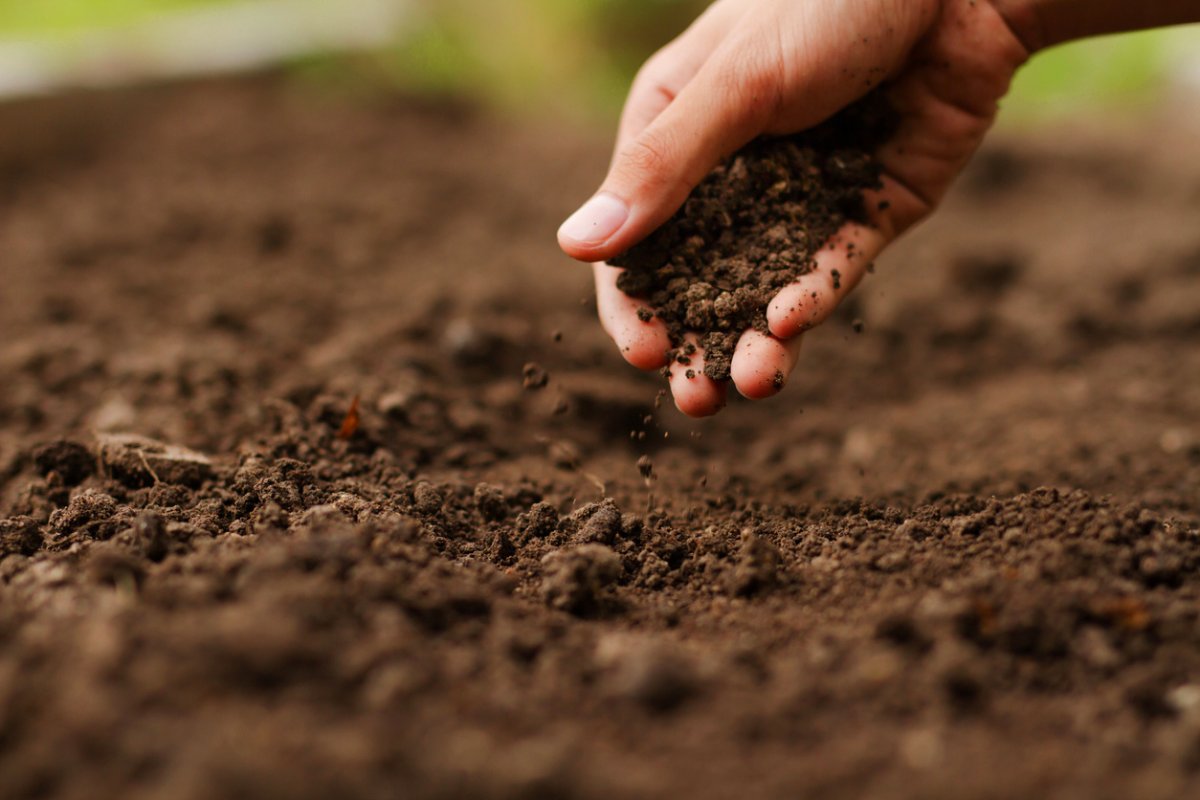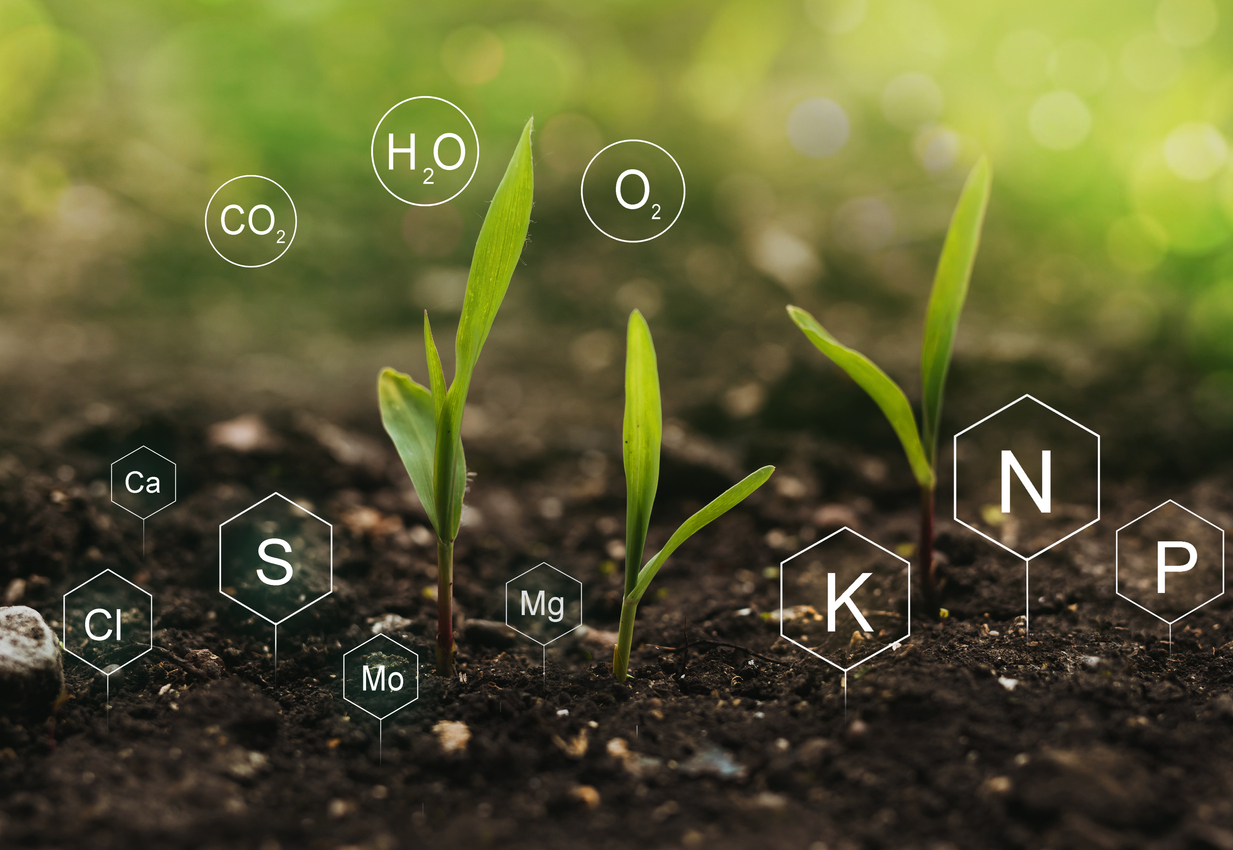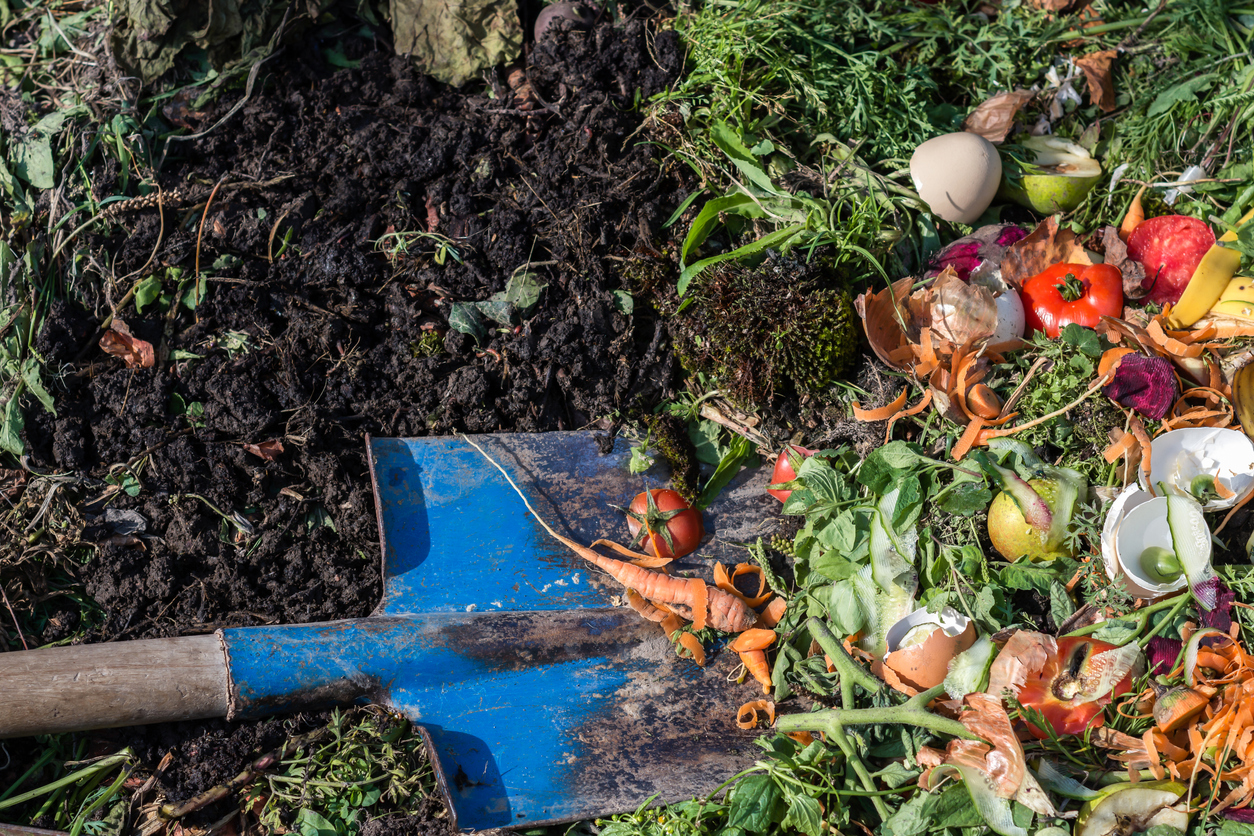

We may earn revenue from the products available on this page and participate in affiliate programs. Learn More ›
As gardeners explore options to improve the health of their soil and plants, some may wonder, “What is blood meal, and is it good for my garden?” An organic animal-based fertilizer, blood meal adds significantly higher levels of macronutrients—nitrogen, phosphorus, and potassium—to soil than plant-based fertilizers.
Considered an environmentally friendly fertilizer good for use on all plants, blood meal is particularly beneficial for fruits, vegetables, flowers, shrubs, and trees. Vegetarian and vegan gardeners, however, may choose to substitute alfalfa meal or kelp meal for blood meal.
What Is Blood Meal?
Blood meal, an organic fertilizer that provides microorganisms beneficial for soil structure, enables soil to hold water and nutrients. Because blood meal “fertilizer”—technically, a soil amendment—must be organically decomposed by bacteria before it releases nutrients to the soil, it can take a while for it to help plants. However, it has long-lasting effects on soil.
Although considered organic, blood meal is actually animal blood, acquired from slaughterhouses and meat-packing plants and then dried into a powder before being packaged for sale. The blood (usually from cows) that blood meal is made of is steamed or boiled to remove impurities and kill pathogens, flash-frozen, and ground up. “Meal” generally refers to the coarse, unsifted powder ground from edible seeds of grains, but in this case, what’s in blood meal is dried blood ground into a powder.
RELATED: The Best Garden Fertilizers According to Our Research
5 Reasons to Use Blood Meal in the Garden

There are many reasons to use blood meal for plants and soil health. It’s an organic source of nutrients that improves soil, promotes plant growth and flowering, reduces waste, deters unwanted pests, and aids in composting. Blood meal is good for virtually all plants, and it lasts long in soil. Blood meal can be stored long-term in a cool, dry place for years without going bad.
1. Blood meal provides nitrogen and other macronutrients.
Nitrogen is a macronutrient plants need in order to grow, bloom, produce enzymes and nucleic acids, and photosynthesize. A shortage of nitrogen results in yellow or pale leaves and poor growth. Because many plants are heavy feeders of nitrogen, this critical macronutrient can become depleted in soil over time.
Blood meal is one of the highest organic sources of nitrogen and one of the quickest ways to add nitrogen to soil. Blood meal contains 13.25 percent nitrogen content, with low levels of phosphorus and potassium. However, too much nitrogen can burn or kill plants, so it’s important to follow directions when applying blood meal.
2. It lowers the pH level of soil.
The high level of nitrogen in blood meal can increase soil’s acidity, lowering the pH level. This can benefit crops such as peppers, blueberries, cranberries, squash, beans, broccoli, sweet corn, cucumbers, and leafy greens like kale, lettuce, spinach, mustard, and chicory. Trees such as willow, oak, beech, and dogwood; and flowering plants such as azalea, rhododendron, hydrangea, camelia, and daffodil also prefer nitrogen-rich soil.
However, too much nitrogen can cause growth of more foliage than fruit and reduced quality of fruit. It can additionally kill small roots, increasing plants’ vulnerability to decay and pests such as nematodes and mites, so blood meal should not be over-applied to soil.
3. Blood meal can deter pests.
One blood meal fertilizer benefit not directly related to plant and soil health is its ability to deter many animals, such as squirrels, rabbits, deer, and moles, due to its smell. Sprinkling blood meal at the base of plants and on leaves can keep these animals from eating garden plants.
Care should be taken when applying it this way, however; blood meal can be harmful to pets, causing vomiting, diarrhea, and potentially fatal pancreatitis. It can be harmful to humans, too, and some pathogens can cause illness if ingested.
4. The ingredients can activate composting.

Many gardeners compost for its many benefits in waste reduction, soil health, plant growth, water conservation, soil erosion prevention, and its climate-friendliness. Adding to its utility, blood meal can play an active helpful role in composting.
For compost to heat up and break down, it needs a 30:1 ratio of carbon to nitrogen. If a compost pile contains a lot of brown material, such as leaves, adding blood meal can balance the ratio and aid in breaking down the pile faster.
Furthermore, gardeners who use straw bales as a medium for growing their plants can add blood meal to condition the bales. As they break down, the plants and the soil will benefit from the added nitrogen.
5. It’s an affordable soil amendment.
Blood meal is typically one of the less expensive sources of nitrogen. Because it’s very concentrated, it goes a long way, which adds to its affordability. Blood meal application usually lasts about 6 to 8 weeks, and it costs an average of $3 per pound—less than $10 for a 3-pound bag. It takes only a cup of blood meal per 20 feet of gardening space, so a little blood meal can go a long way to improve soil over time as a soil amendment or slow-release fertilizer.
In some areas, though, blood meal can be more expensive and difficult to obtain because of competition from the feed market, which uses it as an ingredient in some animal feeds because of its high protein content (roughly 80 percent crude protein).
When and How to Apply Blood Meal Fertilizer
Apply blood meal in early spring as soon as you see signs of plant growth. Flowers and leafy greens need a lot of nitrogen early in the growing season. Don’t use it near beans or legumes, however. Those crops are natural “nitrogen fixers” and don’t need additional nitrogen.
Mix blood meal sparingly into the soil and spread the mixture through the top few inches of soil. A good gauge is about 1 to 2 pounds per 100 square feet. Too much nitrogen can result in yellow leaves, weak plants, and fewer blooms and fruits. Since nitrogen can burn young plants, avoid applying blood meal to seedlings. Reapply it every 2 to 3 months throughout the growing season as needed.
Blood Meal vs. Bone Meal
Blood meal and bone meal have similar origins and are each used as organic, slow-release fertilizers or soil amendments. Blood meal is made from dried and powdered animal blood, while bone meal is made from the steamed and ground animal bones.
The primary difference between bone meal and blood meal is the nutrients they provide. Blood meal provides nitrogen for healthy foliage. Bone meal supplies calcium and phosphorus for root development, disease prevention, and flowering. Bone meal also contains some micronutrients, such as magnesium, zinc, and iron, which bolster plant health and microbial growth in the soil. Another difference is that bone meal won’t burn plants if over-applied, but blood meal will.
Other Alternatives to Blood Meal
If blood meal doesn’t appeal to you, there are several blood meal alternatives that can be used to amend soil. These include other animal products, but some blood meal substitutes contain no animal products at all.
- Fish fertilizer: High in nitrogen, phosphorus, and potassium, fish fertilizers are made from fish bones, scales, skins, and other fish processing byproducts.
- Feather meal: Almost exclusively providing nitrogen, feather meal is made of ground bird feathers from poultry processing plants.
- Compost: Decomposed yard waste, leaves, grass clippings, and kitchen scraps that provide nutrients, carbohydrates, and cellulose to soil. Compost improves soil texture and supports beneficial microorganisms.
- Manure: The waste of vegetarian animals provides nitrogen, phosphorus, potassium, micronutrients, and organic matter to soil. All manure should be “cooled” or composted before use. (Alpaca and rabbit manure do not require composting.)
- Alfalfa meal: Meal made from legumes, this vegan blood meal substitute provides quick-release nitrogen.
- Coffee grounds: A common household byproduct, coffee grounds contain a small amount (2 percent) of nitrogen and can increase soil acidity.
RELATED: 9 Mistakes You’re Making That Are Damaging Your Soil
